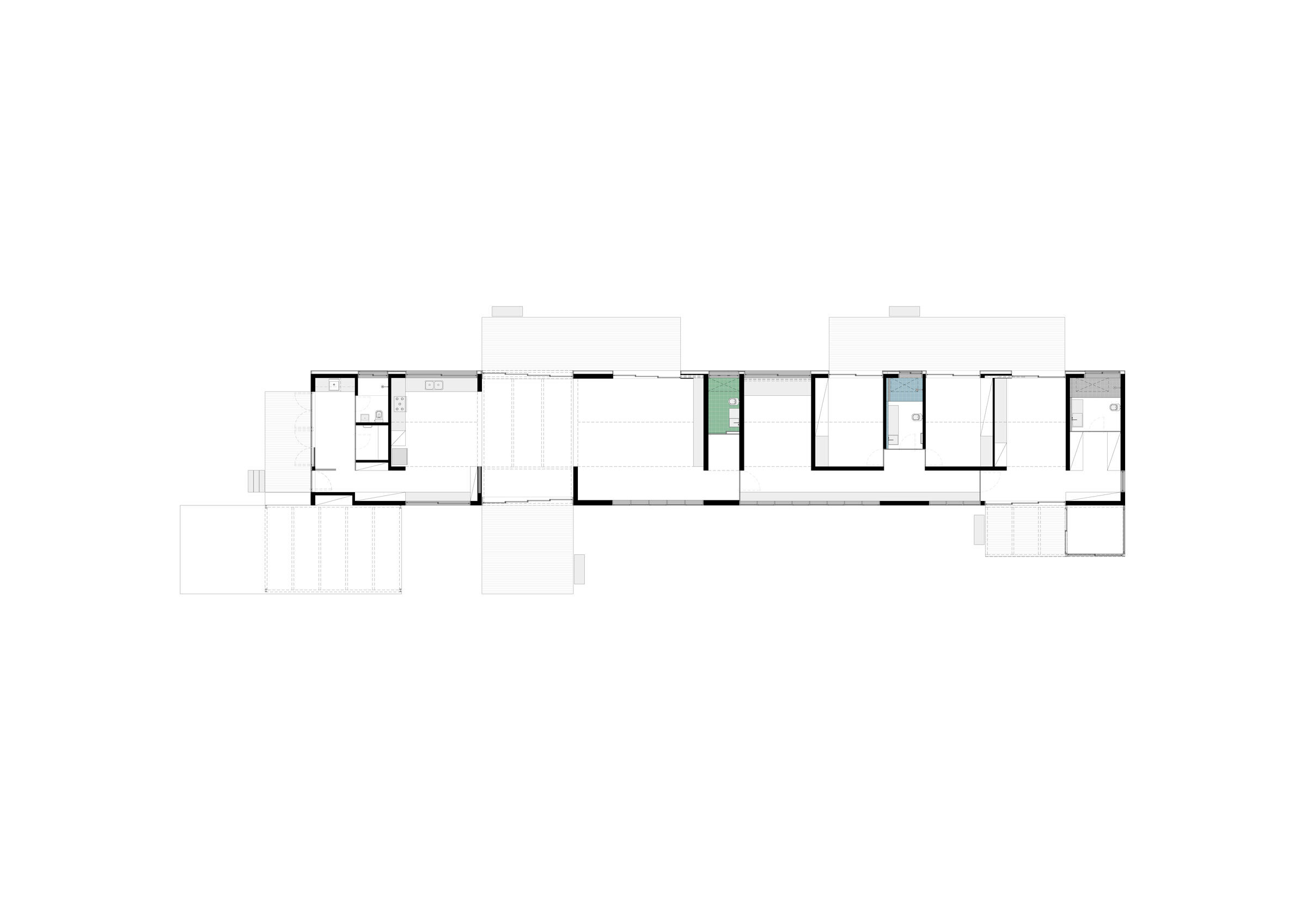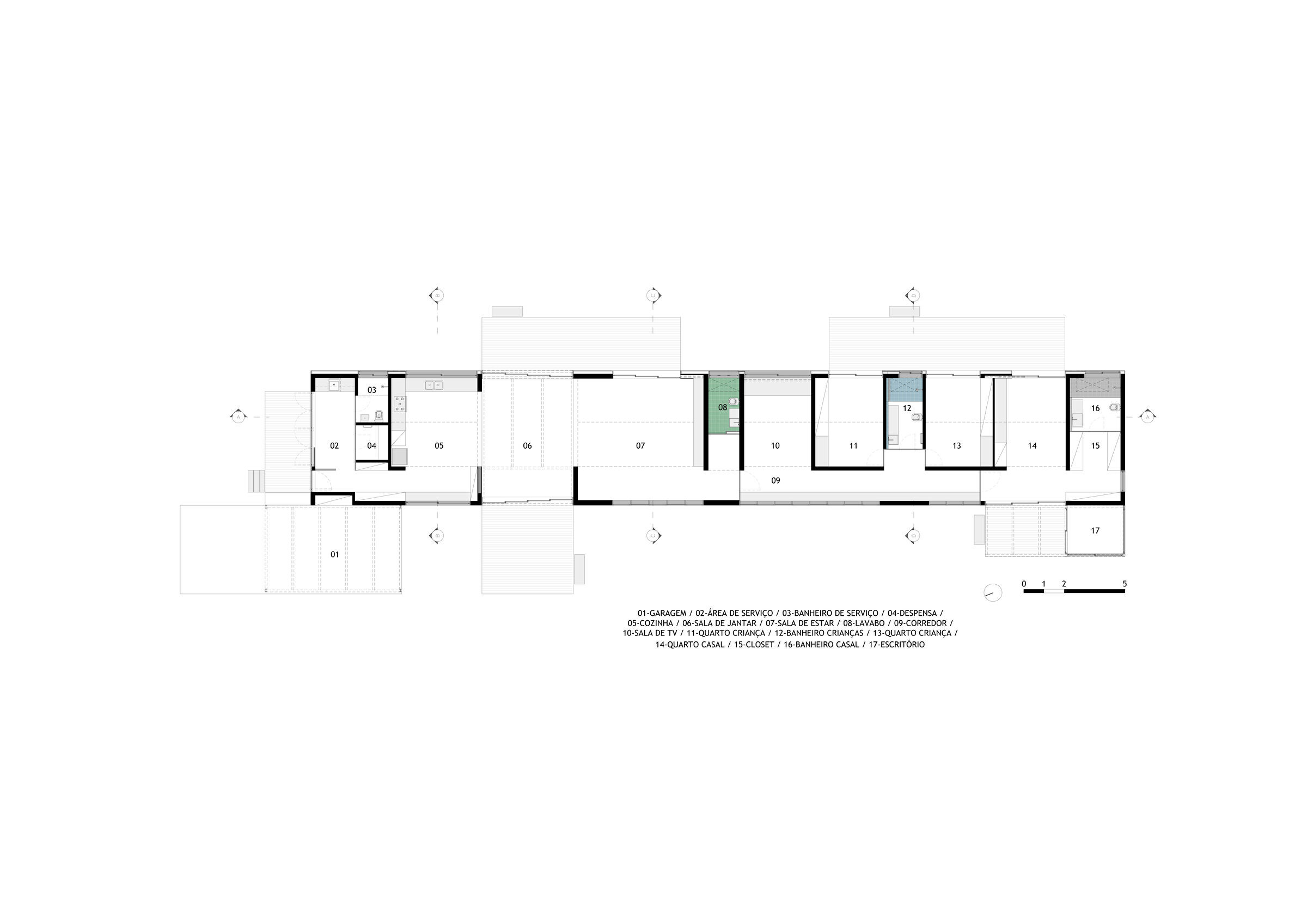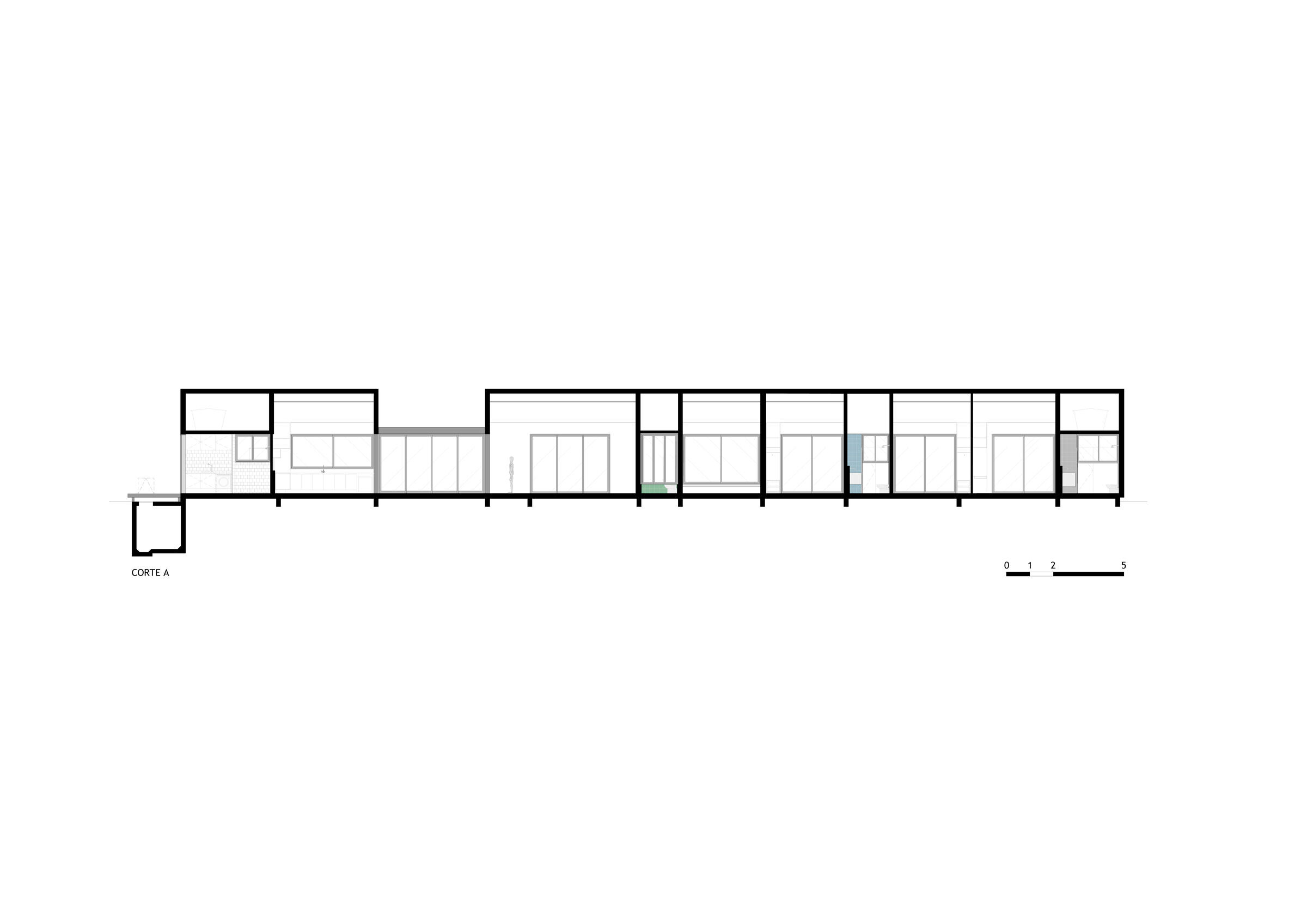The project was born from a dream shared by a couple who loved the place where they had lived for many years, in Itanhangá, Rio de Janeiro. The house they lived in no longer aligned with their life desires. They wanted something simpler, more practical, without excess, yet with great beauty and a generous garden.

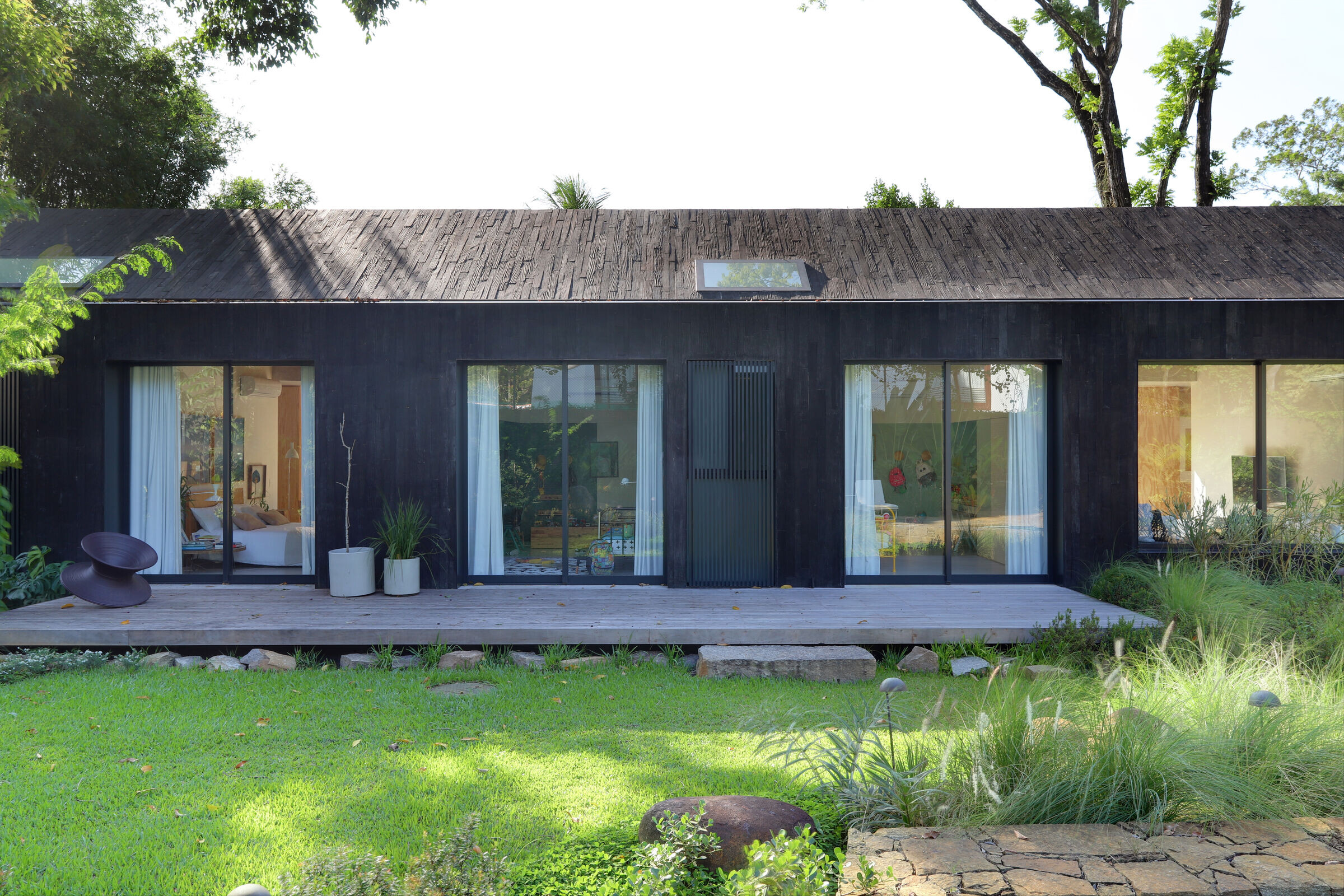
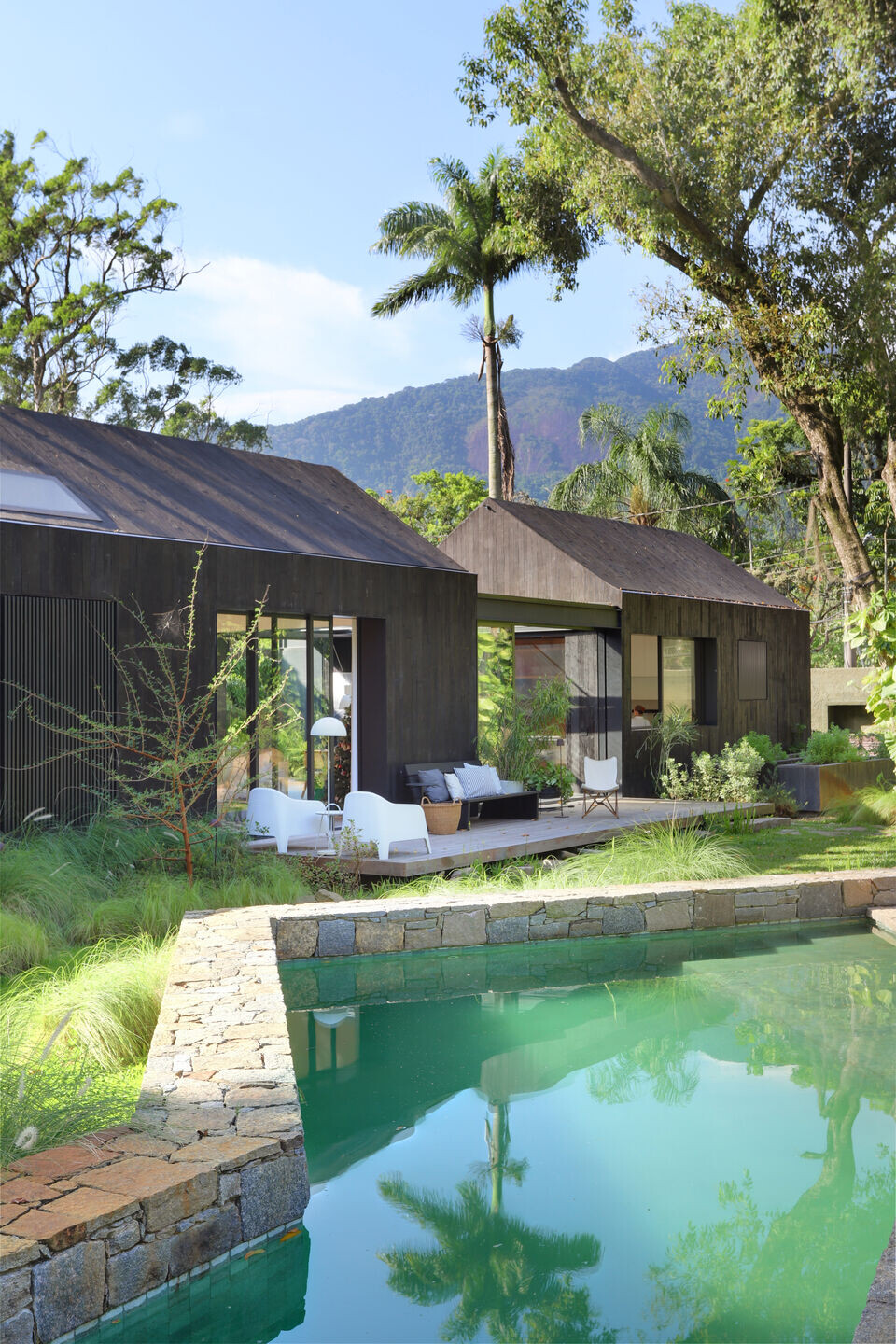
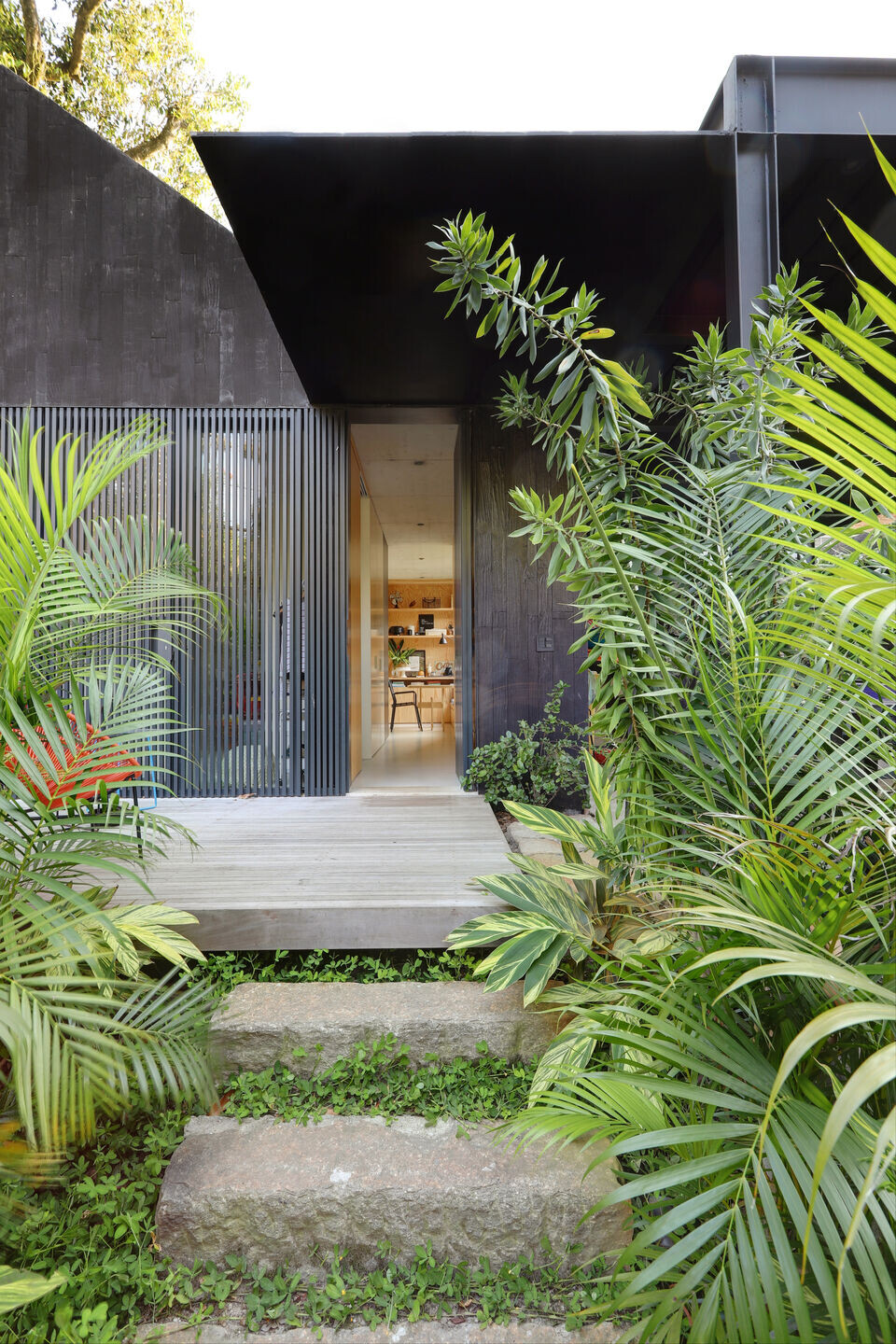
The linear layout of the construction, positioned along the longitudinal boundary of the plot, was designed to favor the main entrance through a lush pathway, maximizing the gardens and preserving almost all the existing trees. The practical access for cars and service areas was strategically placed at the front of the plot, while the intimate spaces were located at the back. At the intersection of these spaces lies the open dining room, celebrating the clients' desire to dine outdoors. The great surprise came when visiting the site: the chosen position of the house offered a perfect framing of the Pedra da Gávea, a visual delight for the residents.

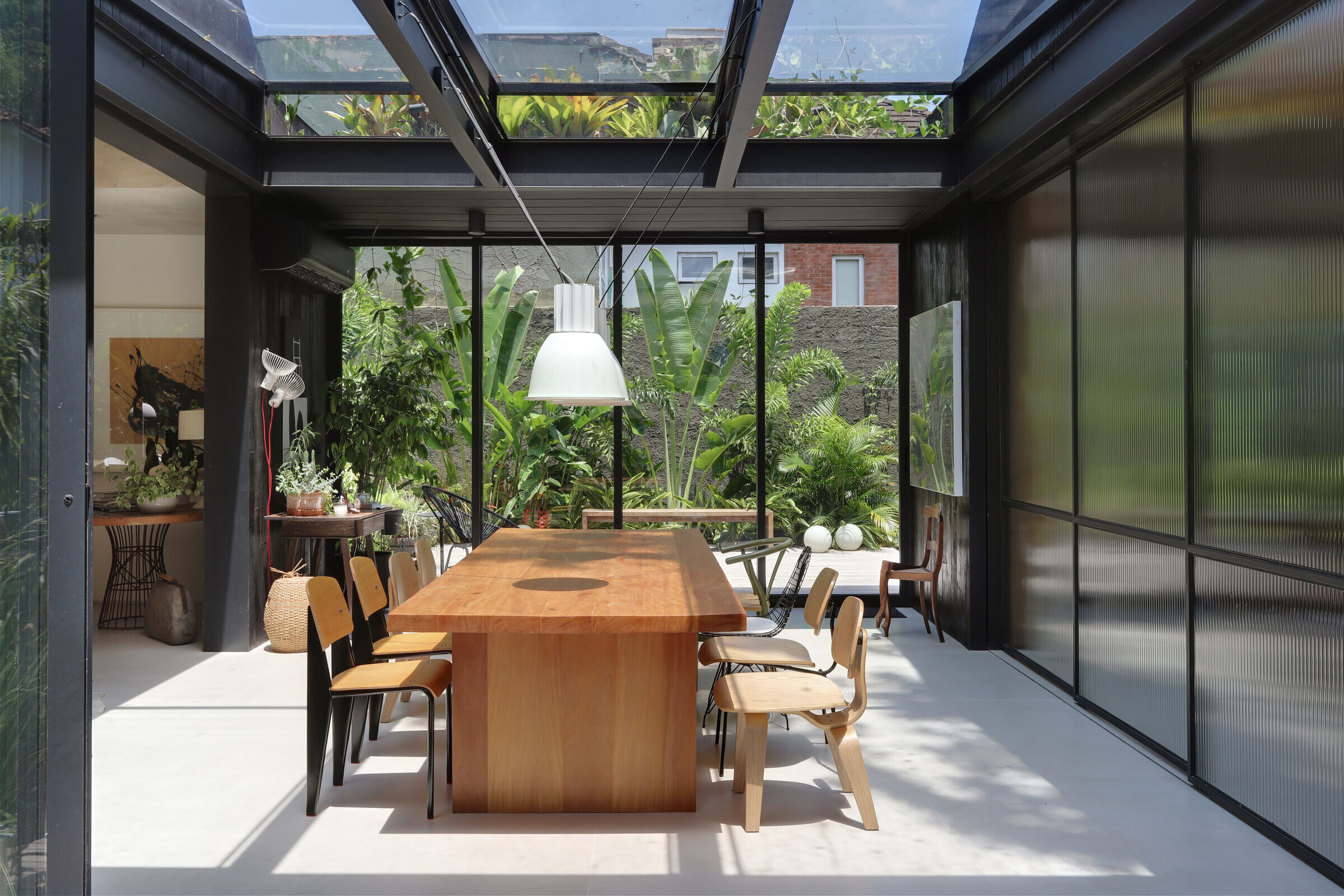
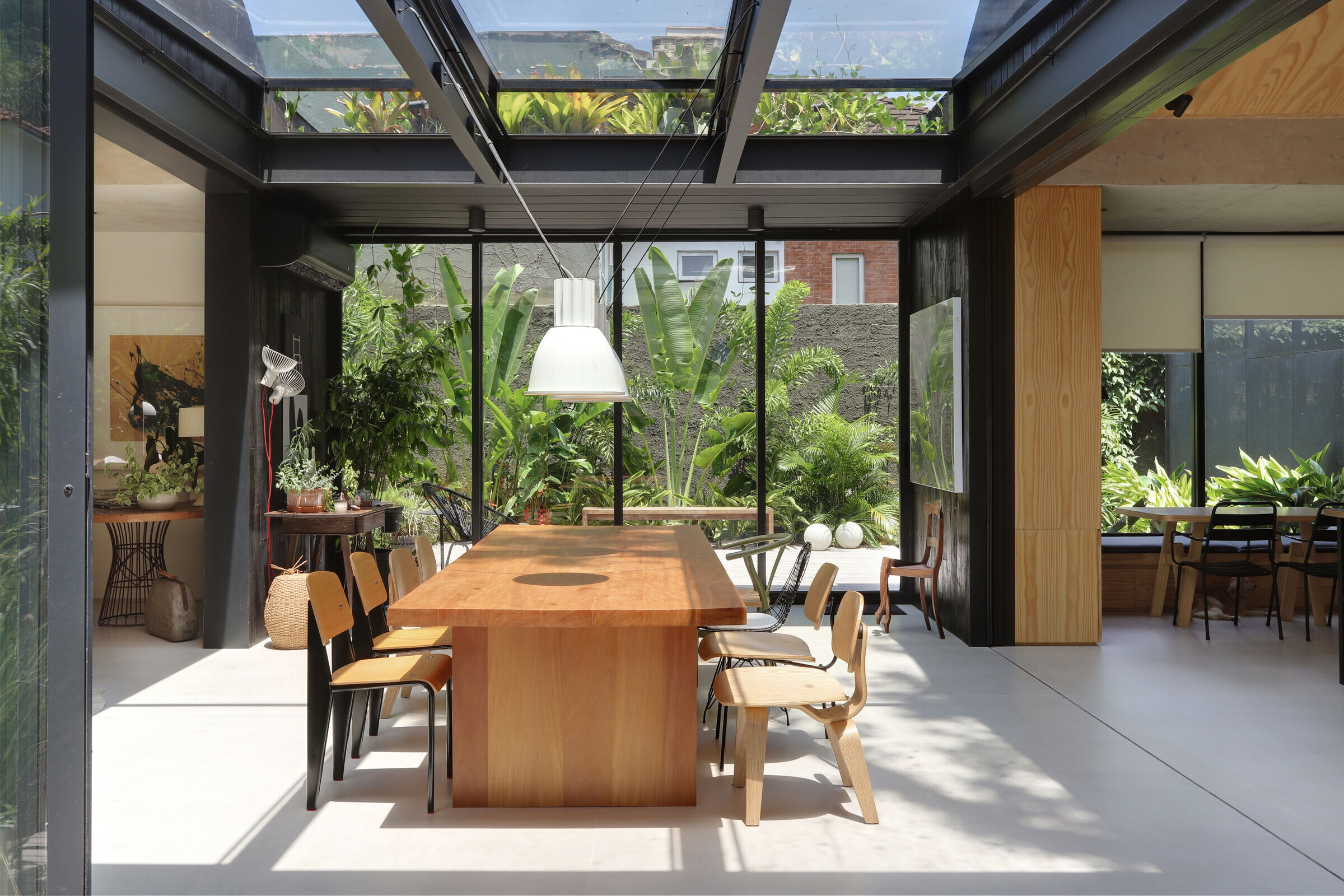
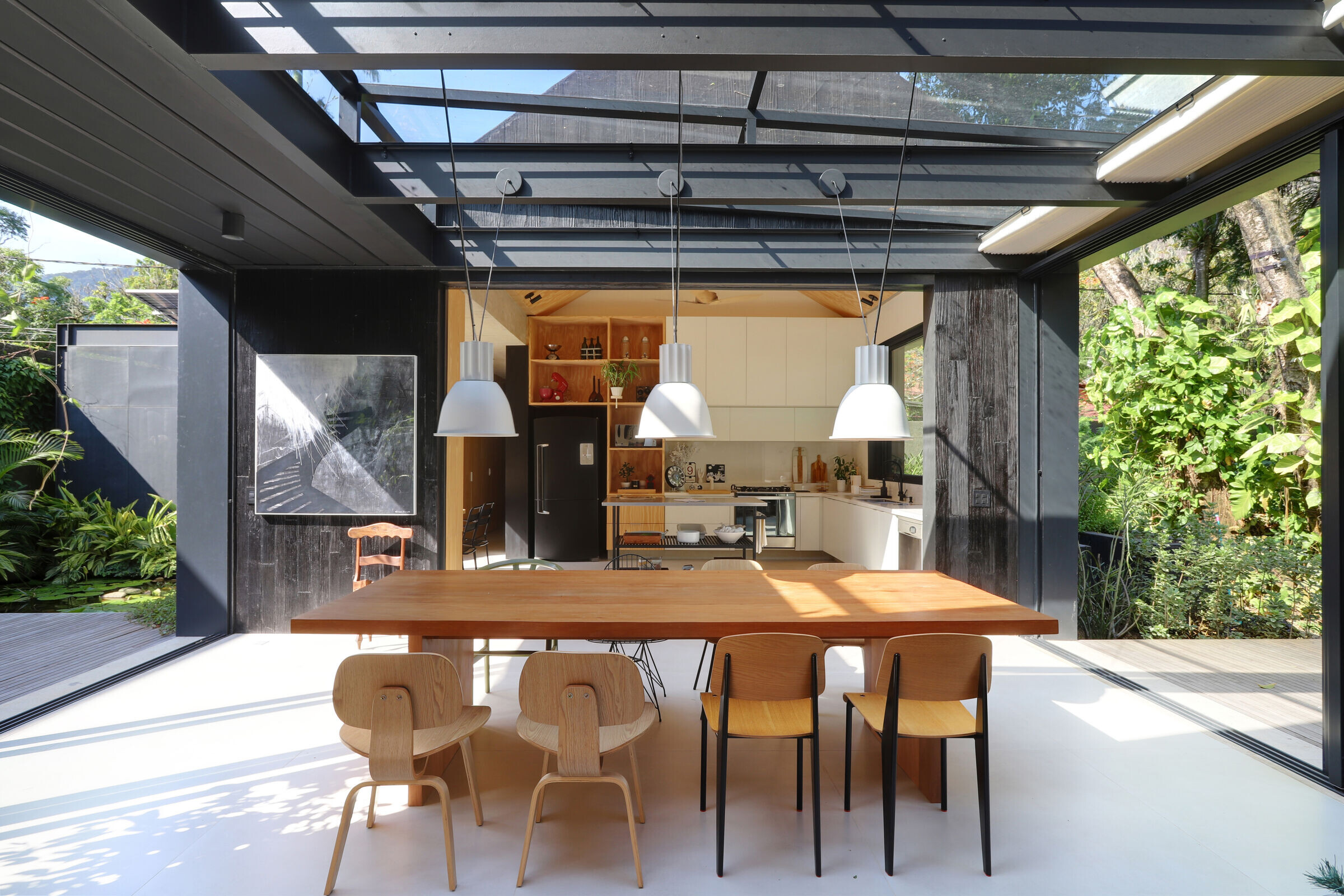
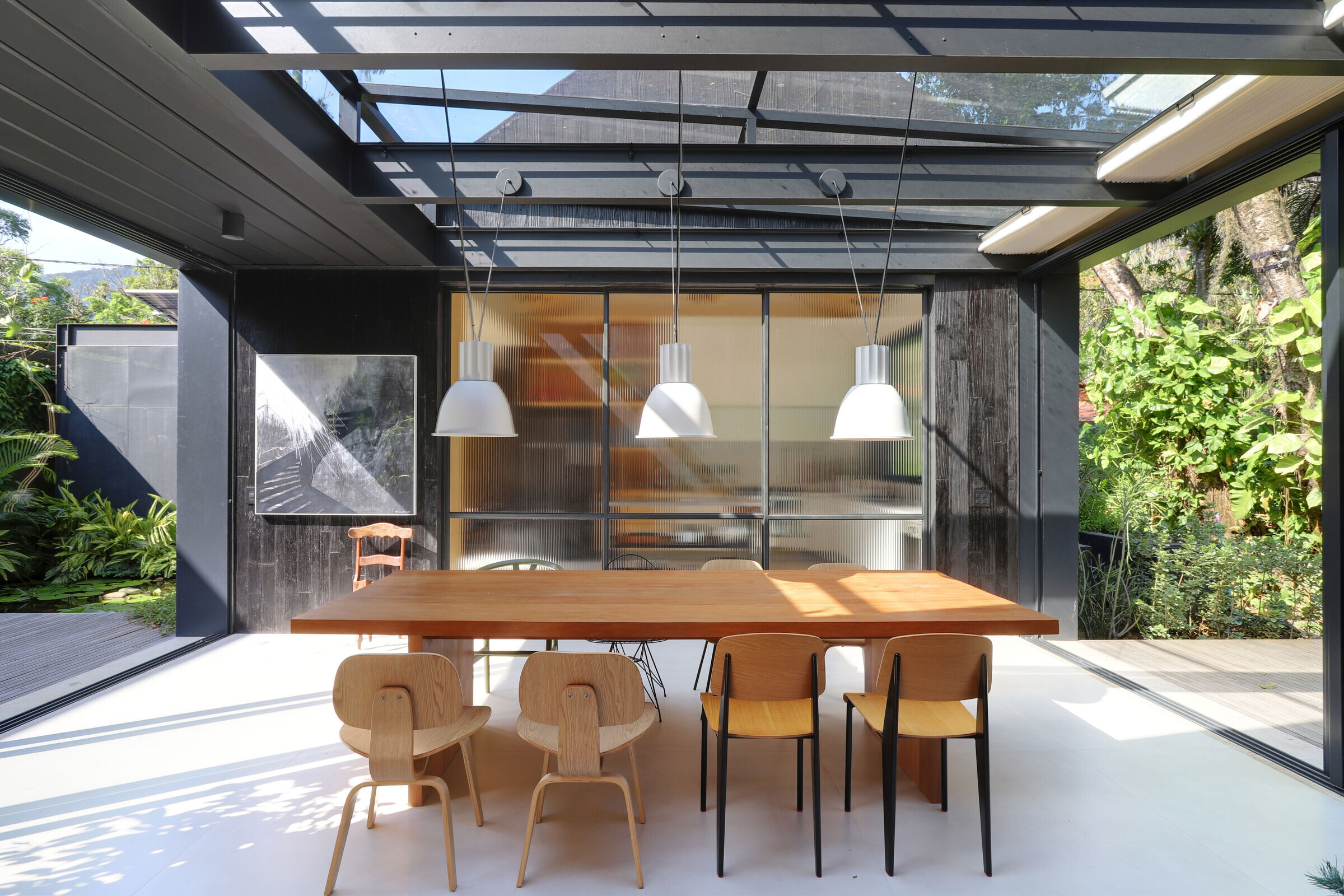
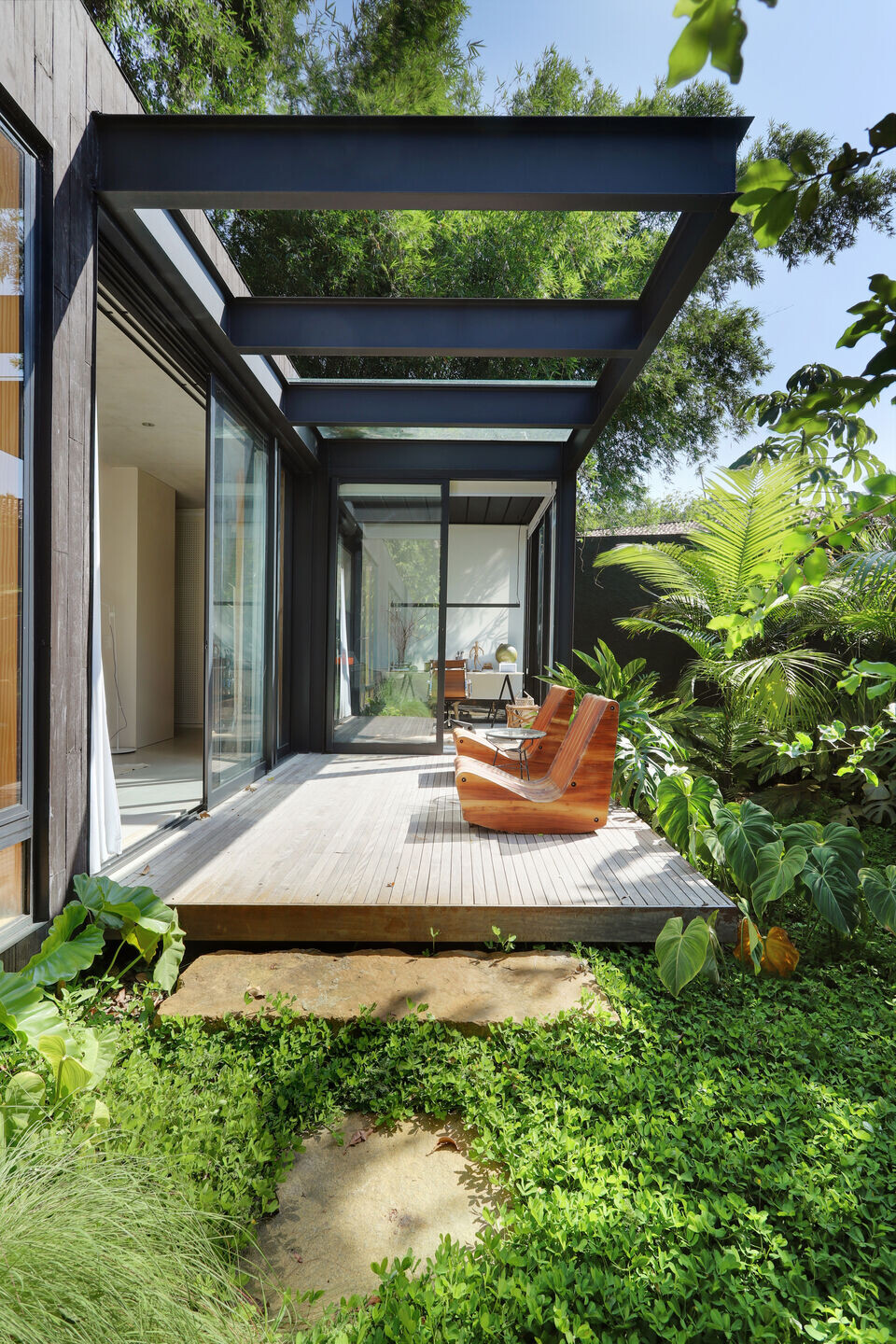

Seeking a more “green” and welcoming design, the initial study considered constructing the house in CLT (Cross Laminated Timber), where the finish and structure would be integrated. The facade would receive treatment with the Japanese technique 'shou sugi ban' as a form of protection against the elements. We advanced with this concept until the client, concerned about durability and maintenance, opted for a more traditional construction while maintaining the same aesthetic result. We then decided to use concrete slats mimicking charred wood planks on the facade, and to preserve the same cozy contrast, some internal walls were clad with pine marine plywood sheets. The touches of color were reserved for the children's bedrooms — light green and dark green — and for decorative elements carefully curated by the client.
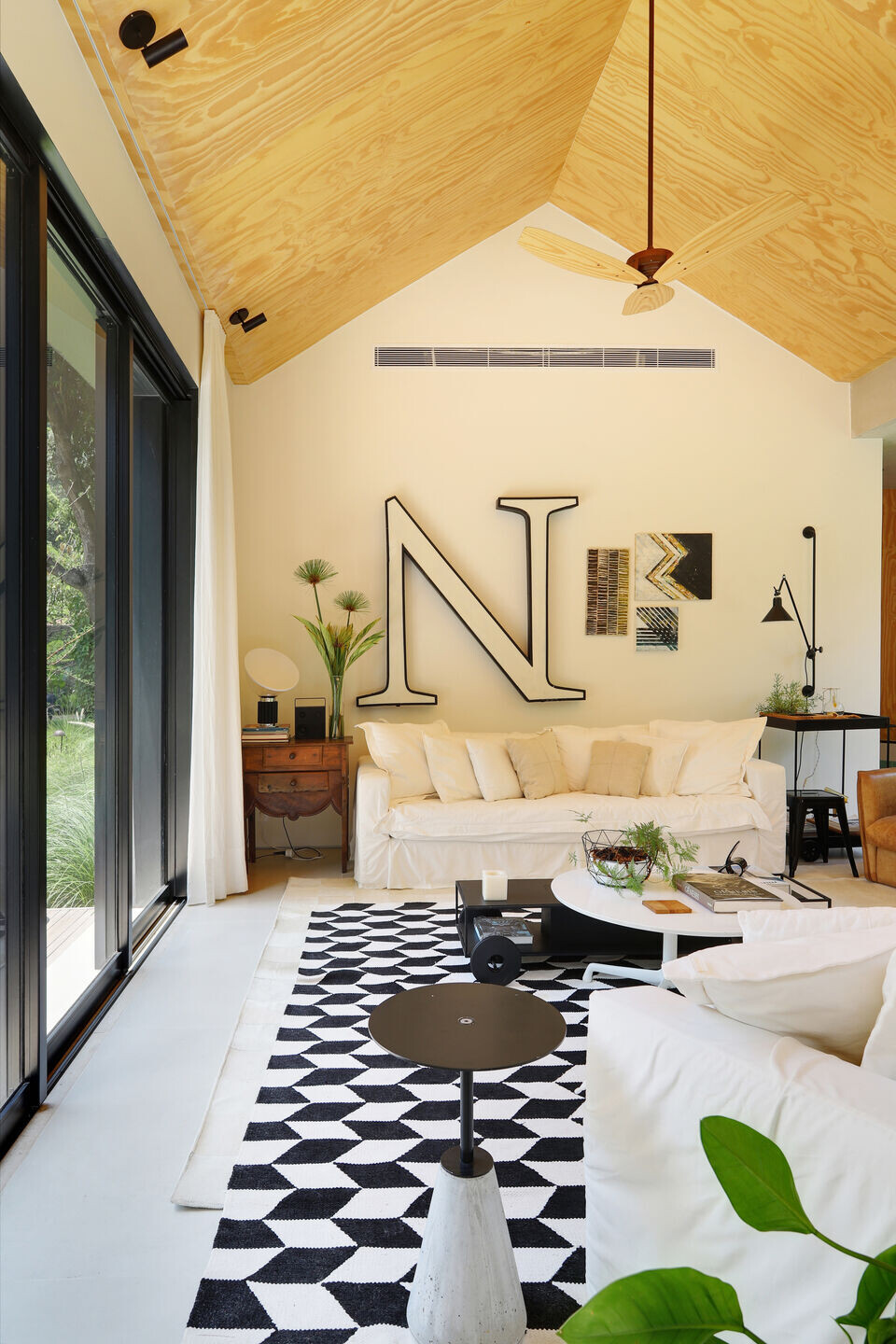
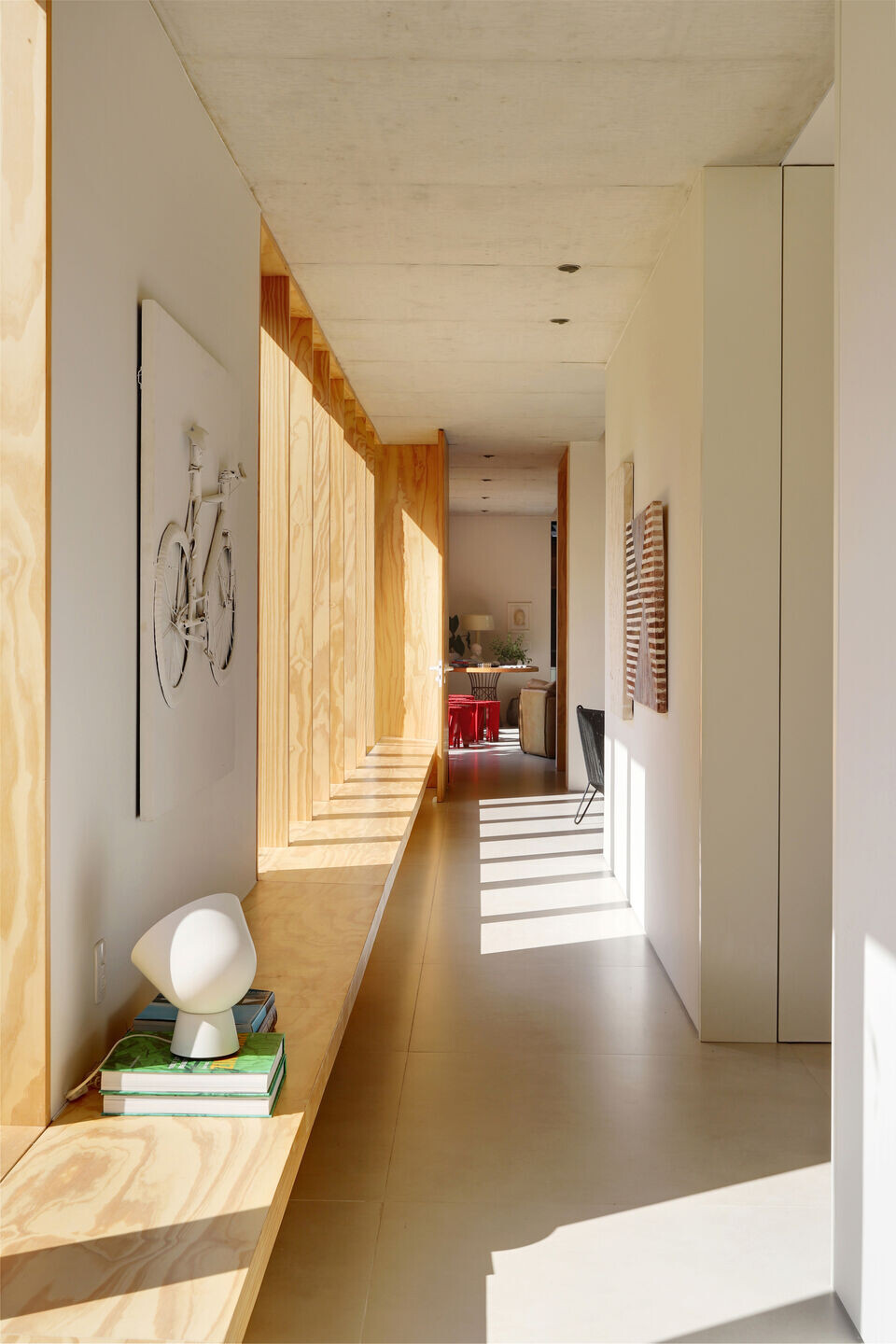
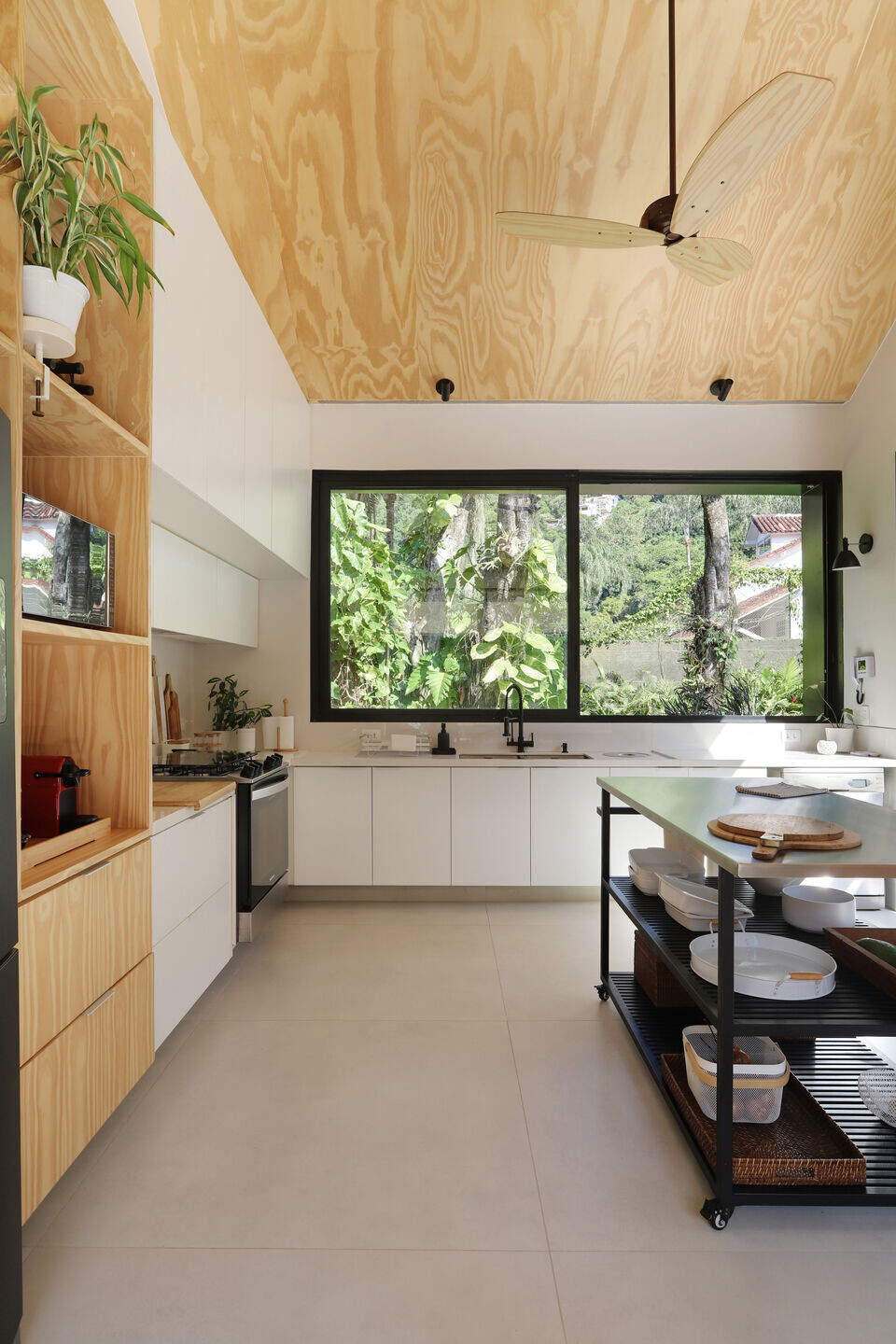
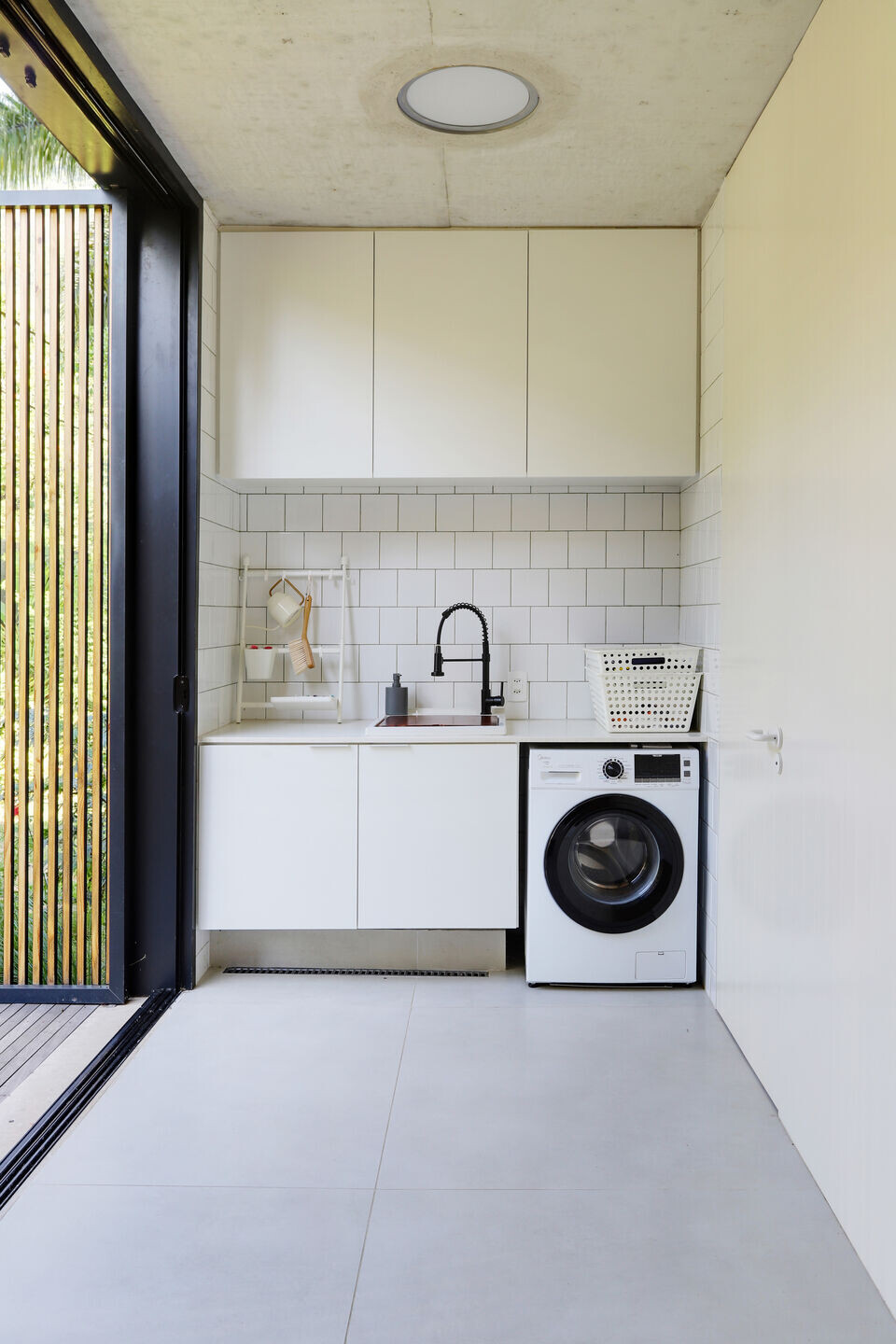
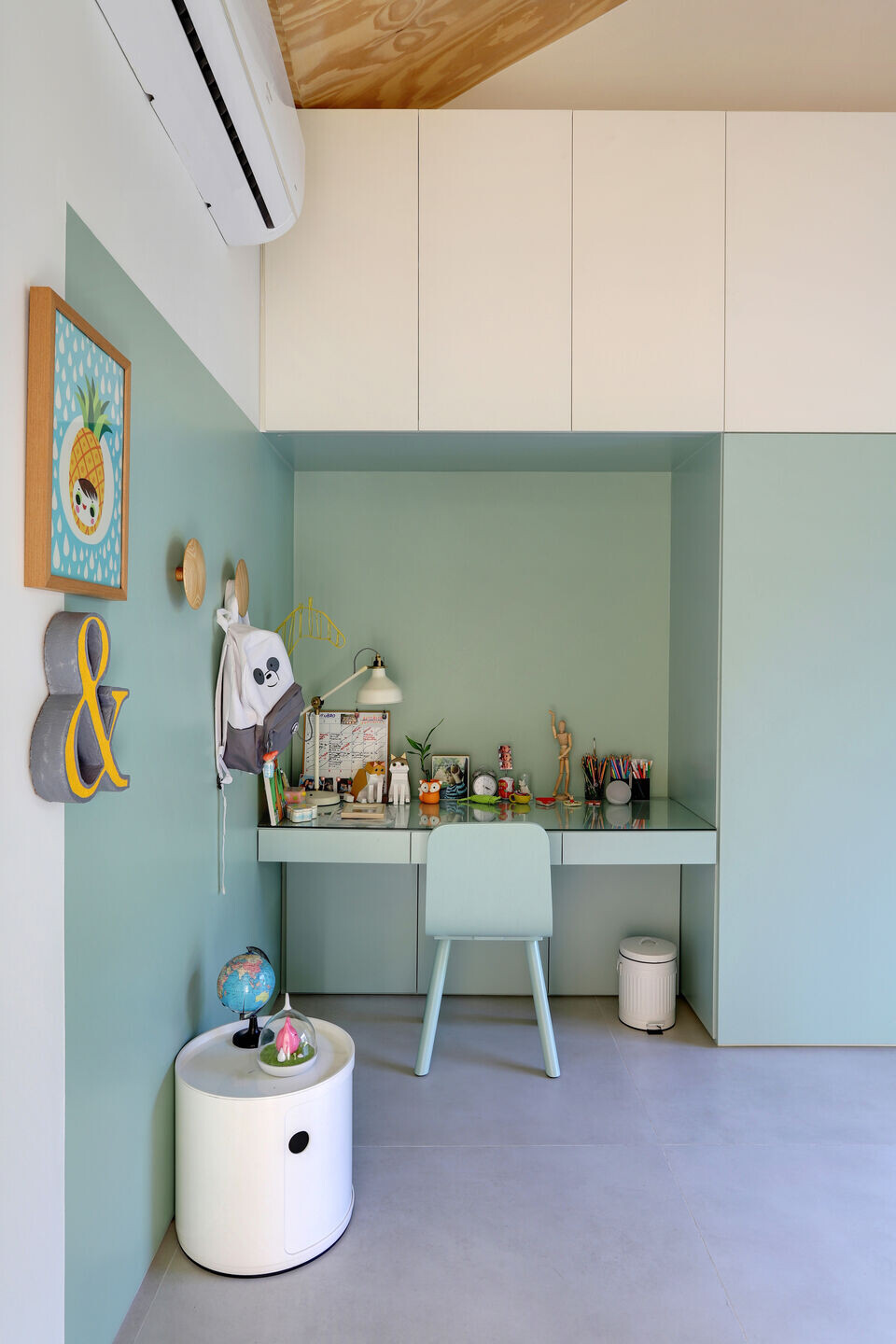

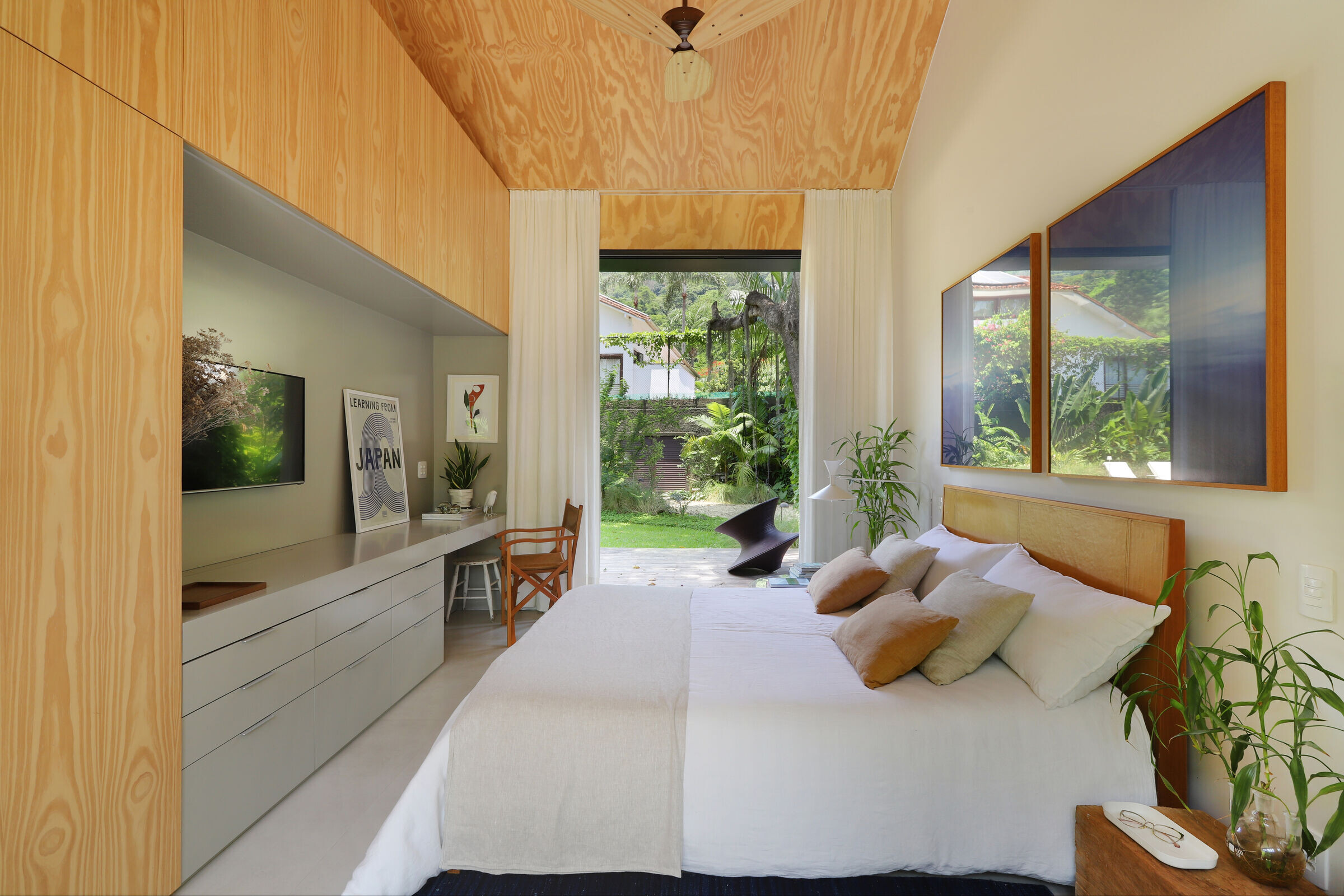

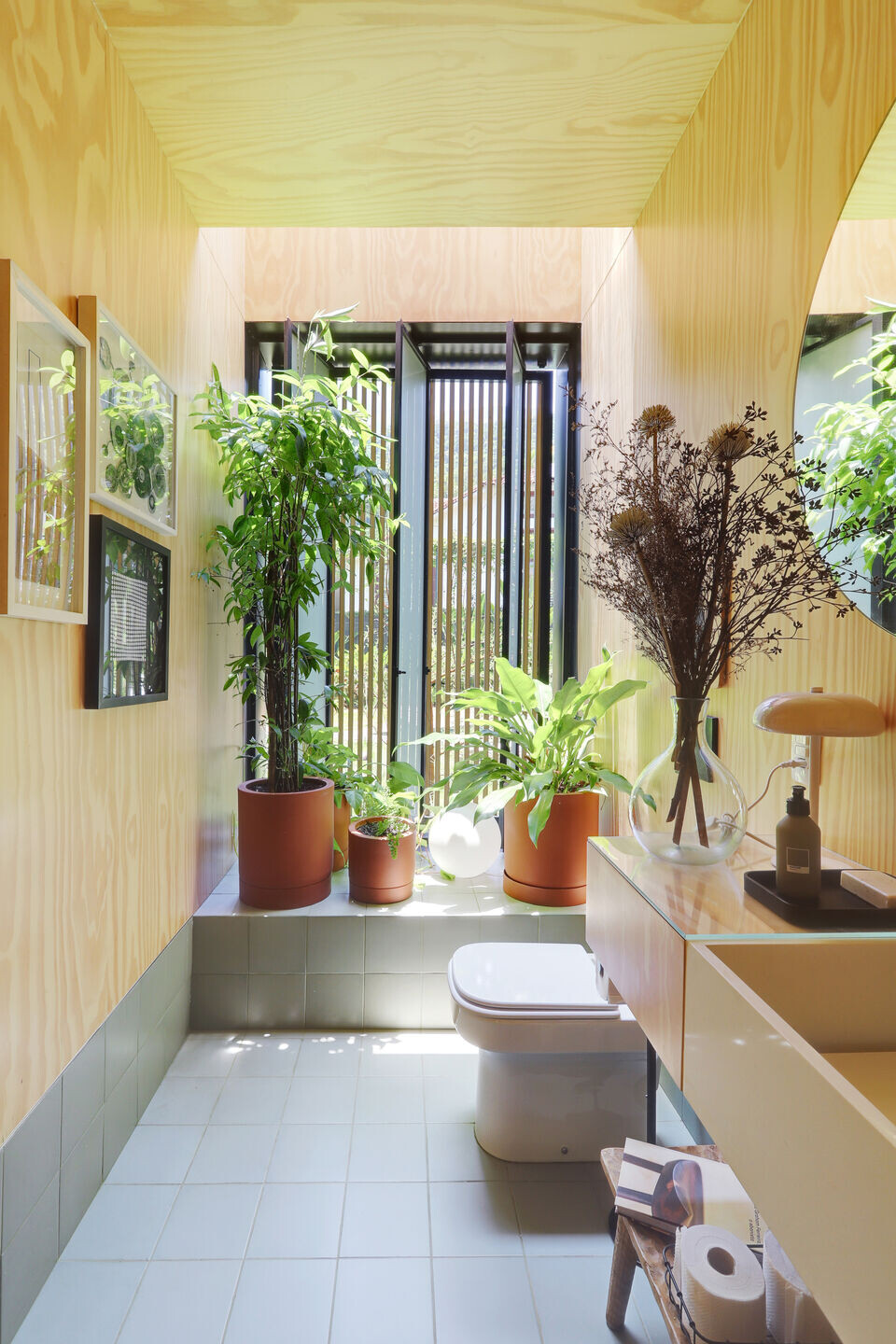
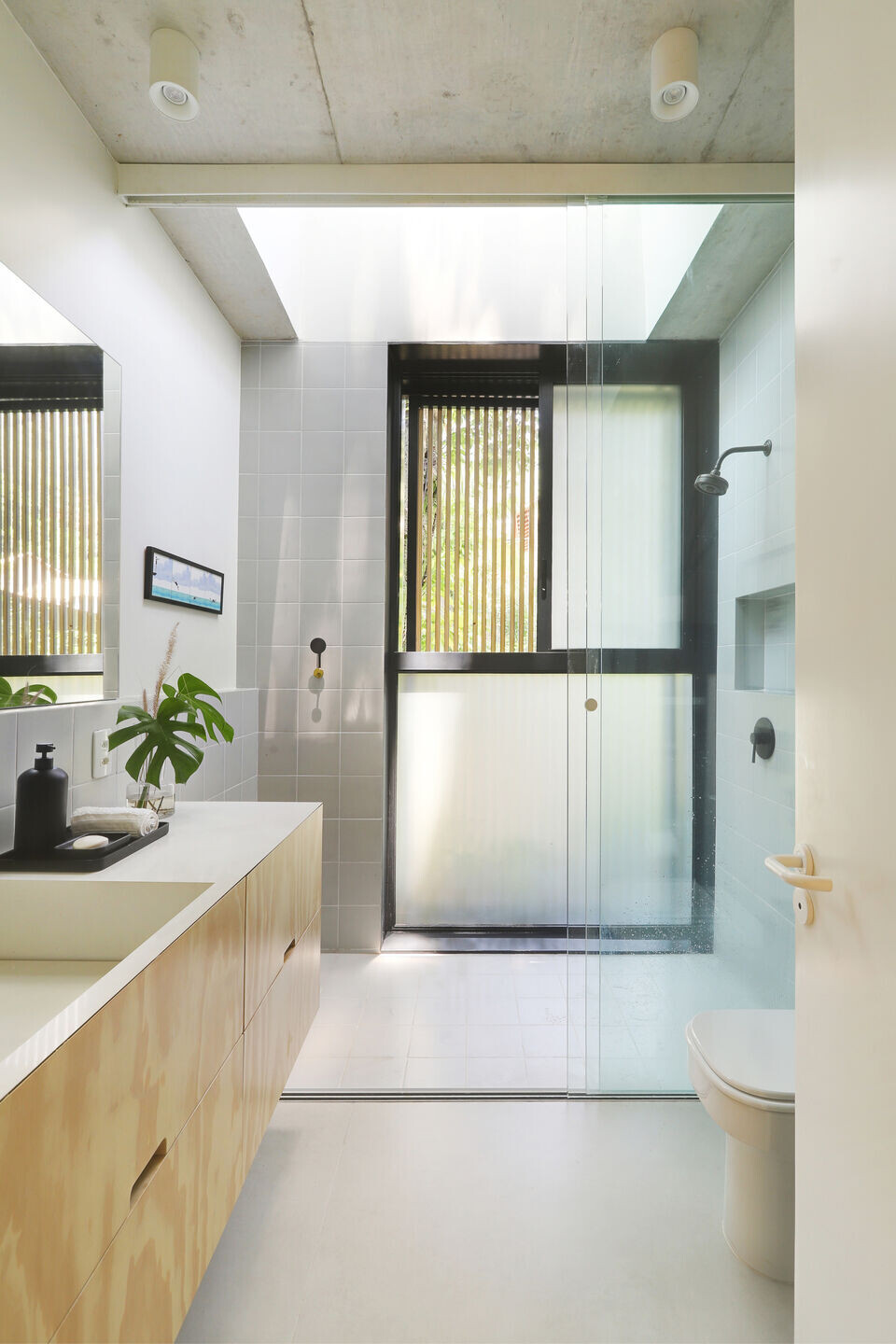
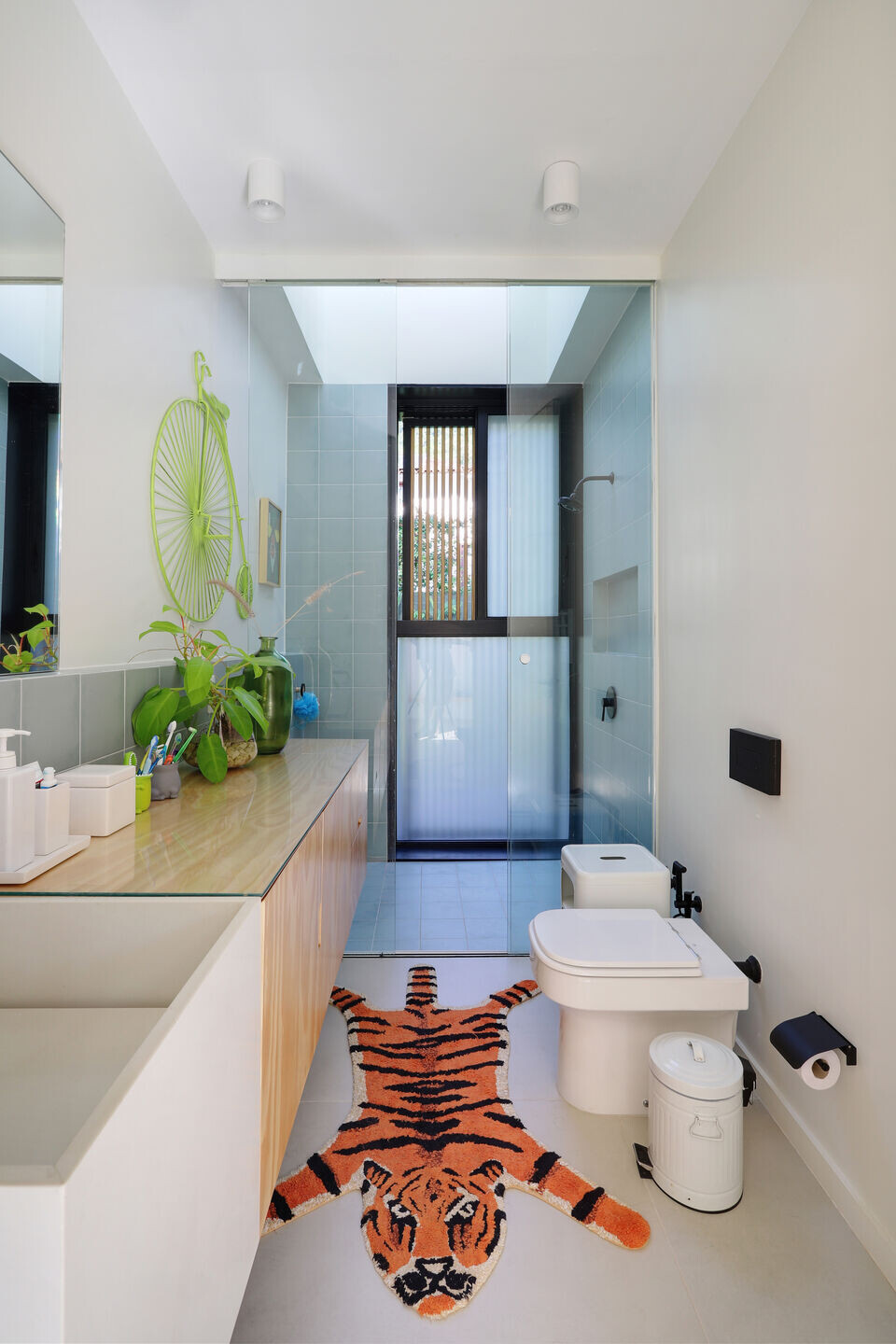
The entire house receives an abundance of natural light and interacts harmoniously with the gardens, ensuring a living experience that is delightfully airy and sunny. Each room features external decks that promote an intimate and constant connection with nature, and skylights positioned in the dining room and bathrooms allow the sky to become an integral part of daily life. The linearity is also present in the internal circulation that provides access to all rooms, with a rhythm marked by alternating supports with glass, followed throughout the length by a long bench.
